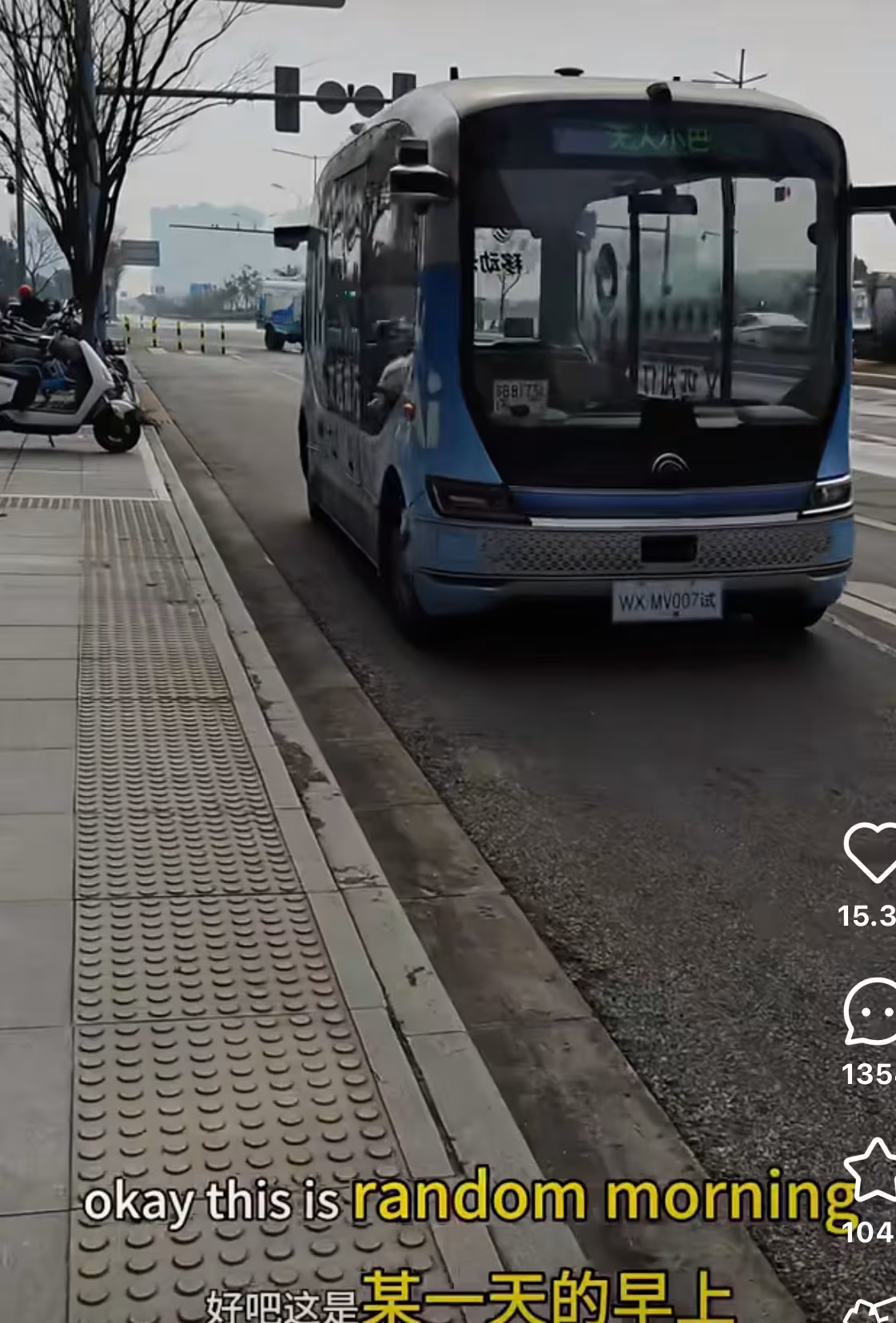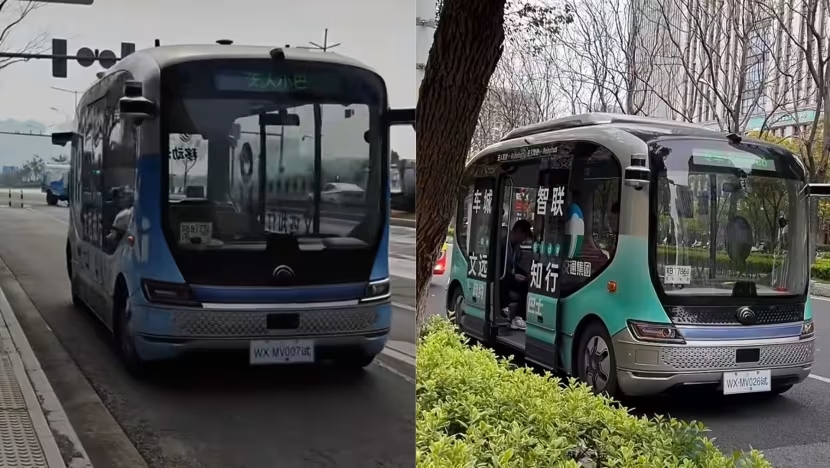While Americans celebrate booking driverless Ubers, China has already taken a step further, rolling out autonomous buses in Wuxi City’s Economic Development Zone.
The innovation is reshaping public transport, offering a glimpse into a future where human drivers may no longer be necessary.
A Xiaohongshu user, Katrina Voyage, recently shared her experience riding one of these unmanned buses, highlighting the ease and affordability of the service.
Upon boarding, passengers simply scan a QR code to pay the fare, which costs as little as USD 0.20 (SGD 0.27) for short trips, while longer journeys of 10 to 15 kilometers cost up to three yuan (SGD 0.50).
A Smooth, Tech-Driven Ride
Despite its compact size—accommodating only nine passengers, including a safety officer—the bus offers
A comfortable interior with seat belts and screens displaying route information and real-time road conditions.

Operating at a maximum speed of 40 km/h, these autonomous vehicles rely on laser radars and cameras to function as their “eyes”, providing a 360-degree view of traffic flow.
The buses can detect traffic lights from 50 meters away, ensuring a smooth and responsive journey.
However, despite the technological advancements, concerns about safety and job security have sparked debate online.
“I am not sure if I will step into one. I got trust issues,” a skeptical netizen commented.
Others expressed worry over the potential loss of jobs for traditional bus drivers.
Safety and Expansion Plans
In response to such concerns, the bus company reassured the public that each vehicle is remotely monitored by safety officers.
who can take manual control in case of emergencies.
Since their introduction in 2022, these driverless buses have already served over 300,000 passengers as of November last year.
Their success has even led to the launch of a pilot program to use these buses for sightseeing tours, broadening their functionality beyond daily commutes.
Is Singapore next?
The future of autonomous public transport is fast approaching, and it may not be long before other nations follow suit.
Singapore’s Land Transport Authority (LTA) has already announced plans to trial autonomous buses next year, covering routes in Marina Bay, Shenton Way, and one-north.
As technology continues to redefine urban mobility, China’s driverless bus revolution could be just the beginning of a global transformation in public transport.












